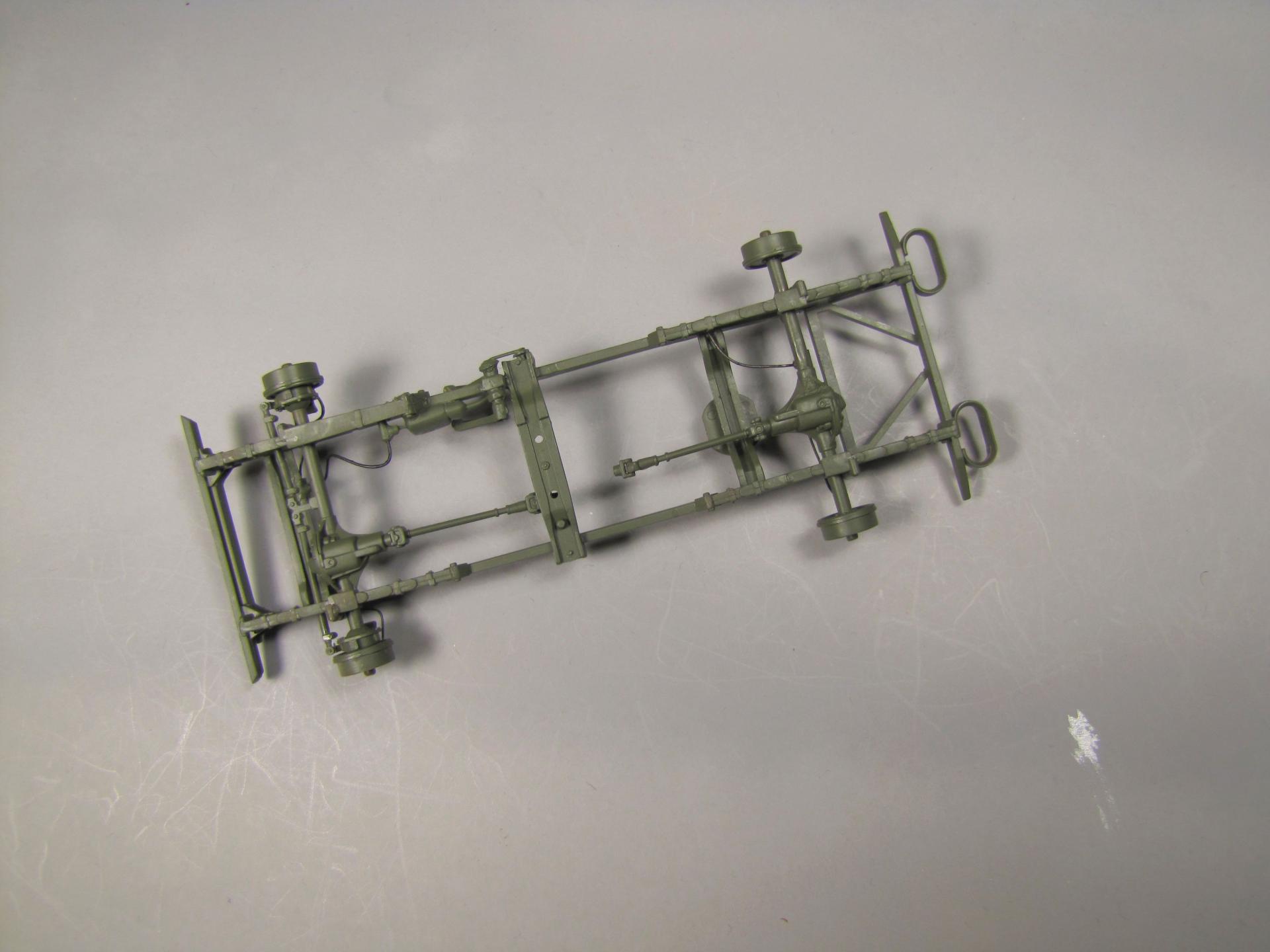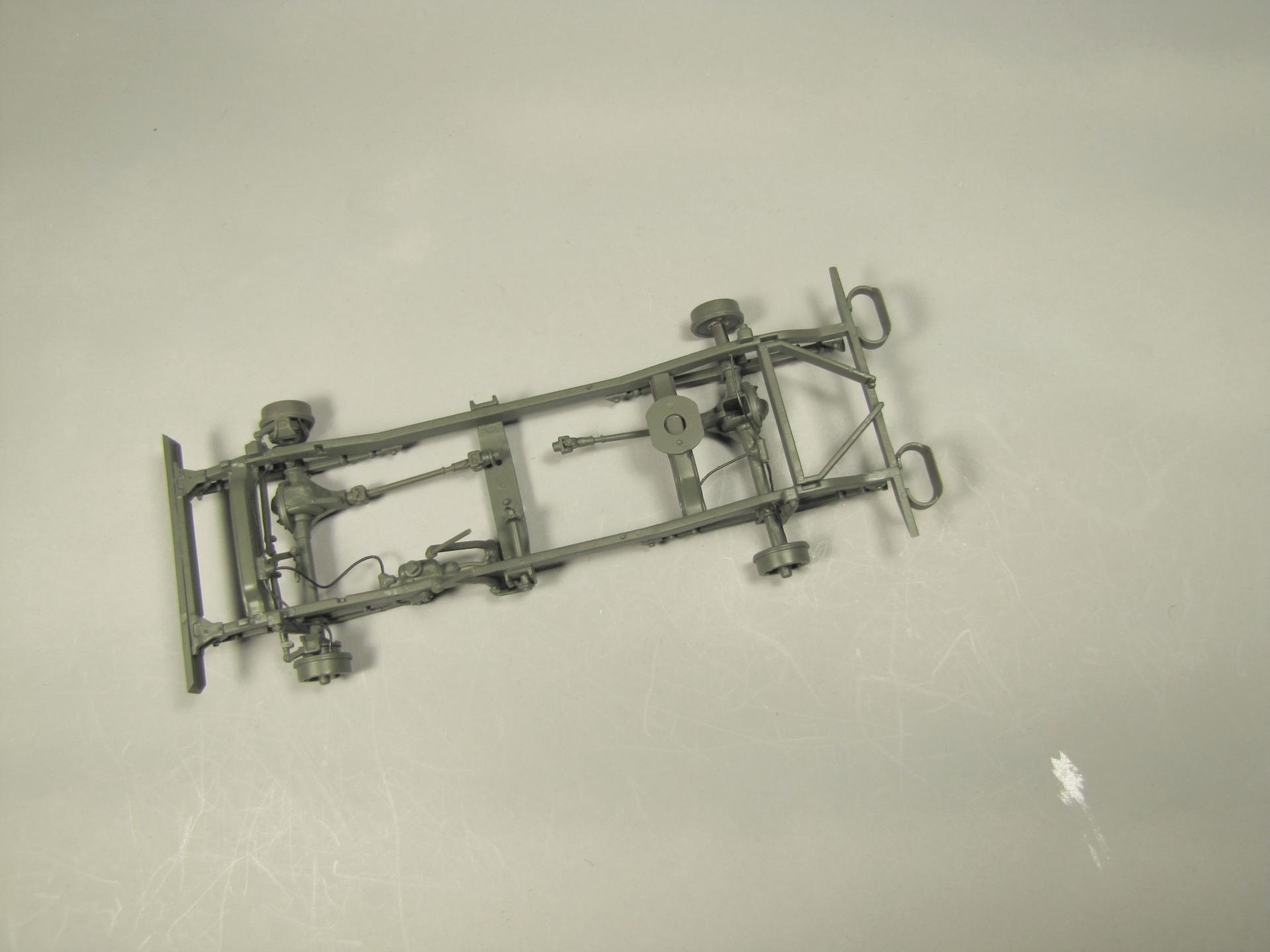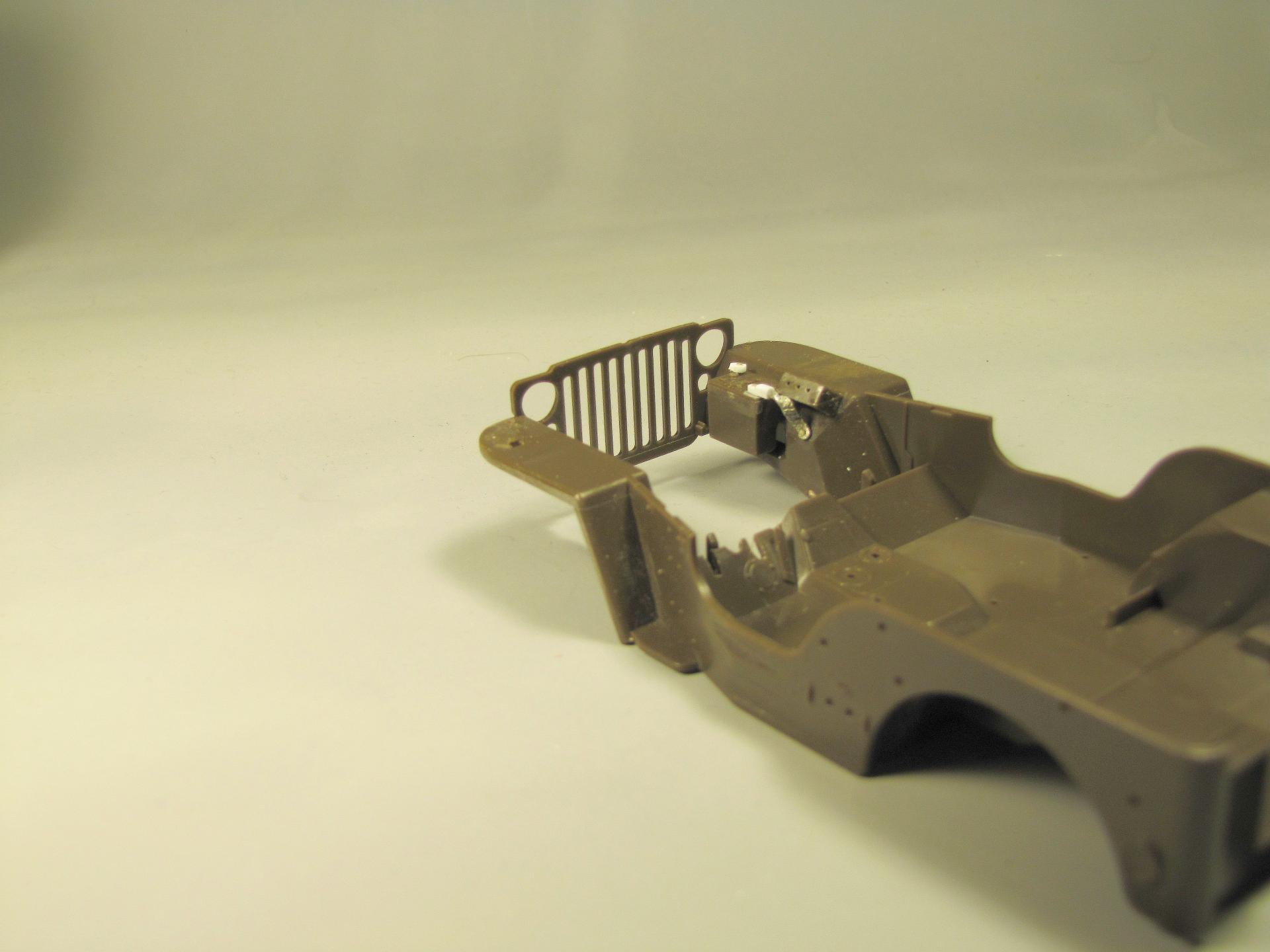
Art Anderson
Members-
Posts
5,052 -
Joined
-
Last visited
Content Type
Profiles
Forums
Events
Gallery
Everything posted by Art Anderson
-
I've always used ordinary beading copper wire from Hobby Lobby or Michael's, and simply painted the installed plug leads the appropriate color. There really wasn't much surface texture to those cloth covered plug leads, as the covering was rather heavily varnished, to prevent oil and gasoline from reaching the natural rubber insulation underneath. Art
-
British Racing Green?
Art Anderson replied to Kit Basher's topic in Model Building Questions and Answers
It would be wise to bear in mind that there was never any "Official" shade of green used by British carmakers and racing teams back in the days of "National Racing Colors" as assigned originally by the Automobile Club of France (in the 20's into the 30's, pretty much the governing body of international motor sports worldwide, outside of the USA. Green was used, in all manner of shades from nearly black to medium green (Lotus, for example). BRM (British Racing Motors Ltd) used, a transparent dark green (think candy green) for many seasons, sprayed over the raw aluminum bodywork, which showed through as "blotchy" due to the sanded finish of the aluminum. I suggest you do some Googling, look for pics of real E-types painted dark green, as a place to start (?) Art -
The question might be: "How obscure would this subject be today? Sure, there are hundreds of us out here who would jump on a reissue, but it takes several thousand buyers of any reissued model kit to lay out the coin, if such a reissue is to be at all profitable. Along with that, if the tooling is still viable (that is, no inserts missing, no noticeable rust damage, all that sort of thing). That would be the two biggest question marks, were I the one having to make such a decision. Art
-
Back to the original topic here: I was working as the plastic model kits buyer for a very large hobby shop here in Lafayette IN, when the "Silent Sam" STP Turbine kit came out. Two issues with this kit at that time: 1) It was in what I call a "Bastard" scale, that being 1/20 scale--none of MPC's 1/20 scale attempts back then really kicked the cash registers into overdrive--most kids (the bulk of the market back then) walked right past 1/20th!), and 2) This kit is incredibly complicated, even for its day--and we had constant complaints about the hollow PVC tires being mis-shapen--and that was an issue with MPC and their hollow tires a lot back then (and MPC wasn't very polite when a modeler called them on it --I know that from personal experience!). A sidebar issue was in just how to paint the model accurately! Beginning with Bobby Unser's 1964 4WD STP Novi, the ever-flamboyant Andy Granitelli insisted on "Day-Glo Red" for the body color. Now, to paint dayglo colors and get them bright--first you paint the body panels white, then day-glo red (back then, about the only dayglo red was Krylon lacquer, which was very "hot", and would wrinkle any paint a younger builder might use, not to mention crazing the plastic!), followed by a couple of coats of gloss coear (the real STP cars were painted in this 3-step method back then, with the noses, and frequently the entire car repainted--some panels, particularly the nose cones, being stripped and repainte NIGHTLY due to both chipping from track debris and sun-fading). A very good gauge of how popular (or unpopular) any model car kit is, is if it ever made it to multiple production runs--and this one did not, apparently, as wholesalers were still trying to unload their stocks of this one into the early 1970's! IF it had been done in 1/25 scale, I suspect that there would have been multiple production runs in 1968 (when it was released) and more than likely, a few reissues over the years. Art
-
YES! Bondic UV-cured clear glue works like a charm in this application! The UV light works perfectly directly THROUGH the clear styrene glass too. And, in the bargain, if you need to remove the glass for whatever reason, the Bondic "bond" is fairly easy to separate (no it doesn't just fall out by gravity), and can be peeled away from the surfaces--the glass re-glued into place. Art
-
I started all over on my 1944 Ford GPW Jeep project!
Art Anderson replied to Art Anderson's topic in WIP: Model Cars
A bit more progress on the GPW! Engine has been basically assembled (still needs the aircleaner system, oil filter, and the fanbelt/pulleys/generator unit, but it was time to get the plug leads done, then paint. Overall, these were painted in US Army Shade 42 "non-specular" (Military term for "flat") Olive Drab--Tamiya lacquer gets the call there. EVERYTHING on those Jeeps was painted in the same flat olive drab--bodywork, chassis engine, transmisson and transfer case--all of it. Next up, it's time to think wiring (beyond the engine), and next up needed to be the battery. Making terminal ends for the battery cables was necessary, as those were not part of anything in the kit--just faint terminal posts, caps and that was it--so pieces of .032" brass rod got the call for the posts, the lead couplings for the battery cables are done with Evergreen strip styrene, cut to shape, then drilled out for mounting on the battery posts, and to accept the appropriate cables (ordinary copper wire will make the primary cable from the generator, but what to do for a braided grounding strap? This detail had to be made so that it fit in place, and not under any tension whatsoever given the very fragile nature of "lead" (actually styrene) ground strap coupling. After a couple of false starts, I settled on a short length of 1mm Stay-Brite Silver Solder, crimped flat with my trusty old slip-joint pliers--their serrated jaws providing a hint of the "cross-hatched" look of a bare, woven wire strap--then bent to shape (with the battery test-glued to it's "shelf" on the right side inner fender--just a bit of that .032" brass rod in a drilled hole in the inner fender made that terminal. Once satisfied that the cable simply "slips" into place, and I removed the battery, and cleaned up the glue marks on the inner fender, ready for painting. Slowly coming along! Art -
Old blade disposal?
Art Anderson replied to Earl Marischal's topic in General Automotive Talk (Trucks and Cars)
I've been using an old soda can for years now. When it comes time to dispose of that, I'll do exactly what I do at work (Purdue University), by simply putting it in a small box, taped securely shut--and visibly marked "SHARPS" on all surfaces. That is the universal way to dispose of such blades, even broken glass, folks! Just do this, then put in your recylables for pickup! Art -
Thinning ratio for car paint.
Art Anderson replied to om617's topic in Model Building Questions and Answers
SERIOUSLY, there really is no true "thinning ratio" for paints for airbrushing, no matter what the "engineering" types will tell you! Every brand, indeed any bottle or can of paint will differ at least slightly in consistency--I've been airbrushing paint on model cars since 1962--so I do think I know a bit about it. Rant said, let's look at it: In my more than 50 yrs of airbrushing paint on model cars, I've learned that thinning paint is a bit of an art--there really is NO mathematical formula--but the "calibrated eyeball" thing does work. Think about drinking a glass of milk here: Note how the milk "sheets" down the inside of that glass--that's the characteristic of how thinned paint needs to be for airbrushing. Simply pour the paint you want into your airbrush jar (or a separate bottle if you are using an airbrush with a gravity feed cup), then add the appropriate thinner to the point where that paint "sheets" down the inside of the glass bottle like that 2% milk your parents bought you for your breakfast cereal--it IS that simple, even though it is an "eyeball" evauation. Now, go forth, experinent (by the way, testing this on a cheap plastic spoon (think picnic spoons here!) will prove what i have just said--so take it from someone who's been airbrushing model car bodies since January 1963. -
Bear in mind though: Those pre-WW-II natural rubber tires were never pure black in color, but rather a VERY dark charcoal gray! (carbon black powder added to cream-colored natural rubber makes dark grey, not black). Art
-
I just make my own sanding sticks! Wet-or-Dry sandpaper, fixed to small wooden sticks (basswood from Hobby Lobby) or popsicle sticks, with gap-filling CA Glue. I can make sanding sticks in any shape needed, and use them WET! Art
-
Campbell Scale Models has a very nice scale chain--links are about 1/16" diameter, blacked brass, for model railroadiers--makes great "safety chain" for pickup tailgates! Art
-
For starters, as I've pointed out numerous times--those early tires were never truly white, but rather a "buff" color when new. In late 1913-early 1914, several rubber companies began adding carbon black powder to their raw latex rubber before vulcanizing, finding that doing this greatly extended tire life, and made a stronger tire in the bargain. Art
-
Bruce, if you do a Google Image Search for 1914 Model T Ford (I just did!), you will notice that at some point in 1913, the headlights went from all brass construction to a black painted "body", with the rim around the lens and that blocky-looking "chimney" on top being polished brass--that would be so very easy to do in BMF, then painted with Tamiya clear yellow. I did some foil work on my ICM '13 T and then painted that with Clear Yellow--looks like polished brass to me! Art
-
You can also use Bare Metal Foil, then paint over it with Tamiya's Clear Yellow--show field bright and shiny! Art
-
Another part of the equation ought to be adding the two small petcocks to the flywheel housing, which were used to check the oil level, one directly below the other. Adding the transmission pedals to the left side of the engine is another very visible and yet essential detail. I really like where this model engine project is headed! Art
-
About the only thing I can think of, is to follow the assembly sequence of the chassis to the letter--given the rather complicated nature of the driveshaft and how it needs to be installed. Art
-
Four door or sedan/post interest
Art Anderson replied to disconovaman's topic in General Automotive Talk (Trucks and Cars)
Over the history of model car kits (and our hobby of buying and building them) the overall experience is that 4 door cars have 2 doors too many. While there are modelers who have a specific interest in 4dr's, I'd be concerned, were I the person making the financial decisions as to what cars to create model kits of. Art -
Question
Art Anderson replied to Lovefordgalaxie's topic in General Automotive Talk (Trucks and Cars)
More than likely all the parts options that were in the original IMC kit of this car were included in the Union Models Ltt. reissue from Japan. Art -
'55 Buick Century sedan..... modified from Maisto police car
Art Anderson replied to traditional's topic in Diecast Corner
Of course, bear in mind that for 1955, when Buick reintroduced the Century, it was available to civilians in just three body styles: Convertible, Hardtop, and a Station Wagon. However, the California Highway Patrol ordered 201 Special 2dr sedans, with the Century's engine, and trimmed out as a Century--none were sold to the general public when new, and I believe just one of of the CHP sedans exists today. But, it sure does make for a neat conversion, just the same! Art -
Considering that Voisin (as with so many carmakers), had some very distinctive styling features--most notably their very slab-sided bodies, and the distinctive front fender to radiator chromed bracing--once you've seen a Voisin, any other Voisin is easy to recognize. Art
-
Ghost Kits - Shown But Never Released
Art Anderson replied to Casey's topic in Car Kit News & Reviews
No. AMT never even tooled up the Ford C-series GarWood garbage truck. I was commissioned to build a display model of it for the 1978 HIAA Trade Show. I last saw the display model in the show window of the LaGrange (IL) Hobby Shop in I believe, July of 1982. Art -
Removing Chrome from Italeri
Art Anderson replied to Warren D's topic in Model Building Questions and Answers
Easy Off Oven Cleaner (in the can with the yellow cap) works for me every time it's tried, However, at least some European plating is done with a rather tough clear base and top coating, which can make it more time consuming. Art -
Information on Monogram's Exotics Series
Art Anderson replied to oldcarfan's topic in Car Kit News & Reviews
Actually, I got the models which are the topic of this thread confused with Monogram's 'Mini Exotics", which were 1/43 scale kits--those did not sell at all well, in my shop, nor at any of my wholesale distributors--they were on closeout lists for months. Art -
Black braided hose question
Art Anderson replied to MeatMan's topic in Model Building Questions and Answers
Just a thought here: Along with those really neat, fine chisel-point black india ink artists' pens that are available, Michael's and Hobby Lobby both have similar "pens" which have, instead of a nib or chisel point, a very fine, sharp-pointed brush in them--and those do come pre-filled with black india ink! Art



